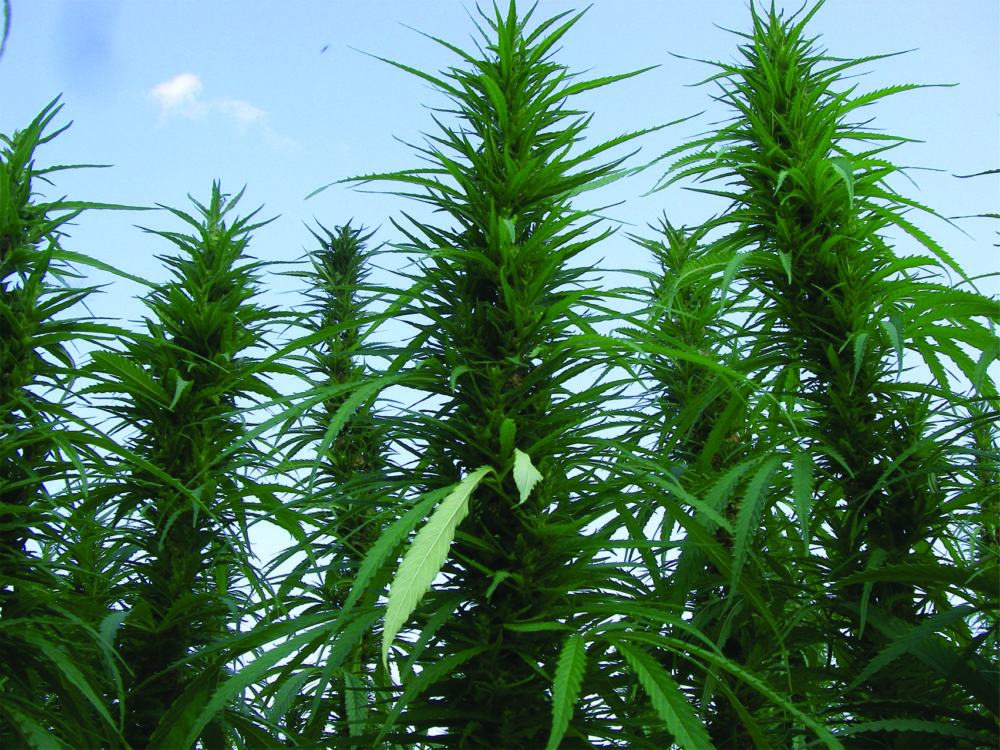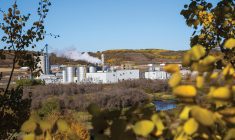The petroleum industry is perfectly aware that the golden days of cheap oil aren’t going to last forever. Although there’s still a lot of oil in the world it’s getting harder and costlier to access. Most of the really good pure oil, called sweet crude, which is easily refined into products, keeping production costs down, is running low.
“The oil that remains is deeper in the ground and it’s of poorer quality, meaning it has more sulphur and other stuff in it, so it’s more expensive to extract and in more difficult places to get at,” says Dr. David Levin, associate professor at the University of Manitoba’s department of Biosystems Engineering. “That oil could be two kilometres under the Gulf of Mexico or in the oil sands of Alberta, where it’s all mixed with sand and the cost of getting it and refining it is very high. As an example, oil from the Alberta oil sands is not profitable unless the cost of a barrel of oil is over $65. When the price of oil went down to $58 or $60 there was a crisis in Alberta and people had to lay off workers because it wasn’t worth them extracting the oil, but now it’s around $90, it’s worth it again.”
Read Also

Claas brings 1000 Series SP forage harvesters to Canada
In mid-August, Claas unveiled its new line of Jaguar forage harvesters at an event in Visalia, California, deep in the heart of that state’s dairy region.
Some of the remaining oil reserves are also in or close to sensitive ecosystems, where there can be stiff environmental opposition to their development, prompted by recent disasters such as the Deepwater Horizon oil spill in the Gulf of Mexico in 2010.
The petroleum industry has already recognised that at some point it is going to be better to use renewable sources of oil that can be converted into the same kind of fuels that we use today but from biological sources. This is what is referred to as next generation or “drop-in” fuels.
“If we can make oils from biomass and then put them through the existing refining processes we are going to end up with fuels that are more or less identical to what are derived from petroleum and then you don’t have to change vehicle engines or the infrastructure,’ says Levin. “This is what they call drop-in fuels; fuels that have the same chemical structure and the same chemical properties as petroleum-derived fuels but from biological sources. The new effort in biofuels is to make drop-in fuels by modifying the biological chemicals to make them the same as petroleum derived fuels.”
It can be done — it’s a problem of scale. Demand exists, even today, for alternative fuels, especially in the aviation industry, which suffers from fluctuating prices and now faces carbon taxes on planes flying to Europe. The U.S. Airforce recently announced that it is close to being able to produce jet fuel derived from algae and British Airways is planning to turn landfill waste into jet fuel for its aircraft fleet.
Food vs. fuel
As the world population grows, the debate rages over how ethical it is to use grain to produce food rather than feed for livestock and food for humans. It heightens when grain growing regions of the world suffer from floods or droughts, pushing up prices that eventually translate into higher food costs. It’s one of the reasons driving research into cellulosic biofuels that can be produced from non-food crops and agricultural waste products.
It has also been suggested that more use should be made of marginal land, which is unsuitable for food crops, to grow mixed species of cellulosic biomass crops for biofuel production. A study by researchers at Michigan State University estimated this untapped resource could provide up to 5.5 billion gallons of ethanol in the U.S. Midwest. “We estimate that using marginal lands for growing cellulosic biomass crops could provide up to 215 gallons of ethanol per acre with substantial greenhouse gas mitigation,” say the study’s authors. It would reduce greenhouse gas emissions if existing vegetation or perennial crops could be utilised, would provide additional revenue for farmers from low value land and would maintain highly productive agricultural land for food production.
How “green” are biofuels?
There is still a lot of discussion around the environmental impact of biofuels.
Many experts argue that greenhouse gas emissions involved in the production of biofuel crops, their transportation to processing facilities and the energy intensive production of the fuel, negates any benefits from reduced emissions from green-fuelled car exhausts.
Other studies have shown that greenhouse gas emissions are only reduced if waste plant materials, which would have decomposed anyway and added to carbon emissions, are used to produce the fuels or if perennial plants or existing vegetative cover are used.
The Swiss R&D institute, Empa has performed “ecobalance” studies in 2007 and again in 2012 to assess exactly how “green” biofuels really are. In both studies Empa concludes “many biofuels based on agricultural products indeed do help to reduce the emission of greenhouse gases, but lead to other environmental pollution, such as too much acid in the soil and polluted (over-fertilised) lakes and rivers.” As an example nitrogen fertilizers emitted into the atmosphere in the production of heavy feeders such as corn crops increase nitrous oxide emissions from agricultural lands, which already account for 68 per cent of all nitrous oxide in the U.S. annually.
From the Country Guide website: Scientists make ethanol without corn or other crops
On the other hand some perennial crops that are among the frontrunners as potential biofuel crops, such as miscanthus, have been shown to reduce the amount of nitrogen which escapes into the environment. A four-year University of Illinois study that compared miscanthus, switchgrass, and mixed prairie species to typical corn-corn-soybean rotations, showed each of the perennial crops were highly efficient at reducing nitrogen losses, with miscanthus having the greatest yield. Perennial grasses also have been shown to lower atmospheric carbon dioxide emissions.
The future of biofuels
Several plants are touted as the next “wonder” crop for biofuel production. Miscanthus, camelina, reed canarygrass, napiergrass, giant reed and sorghum are just some of the many plant species that are being considered as potential biofuel crops. There are suggestions that biofuels could also be made from weeds such as stinkweed (also known as pennycress) and perennial prairie grasses such as switchgrass.
In British Columbia, Quebec and Ontario there is more emphasis on woody biomass from fast growing willows and poplars for cellulosic biofuel production.
There is huge potential for cellulosic ethanol production on the Prairies, where there is an abundant supply of biomass in the form of crop residue such as wheat straw, oat straw and hulls. It is estimated that agricultural residues in Manitoba could produce around 1.1 billion litres of bioethanol annually. The key is the development of localized processing capability and the development of a cheap and easy way to scale up production to a commercial scale.
A huge national network called BioFuelNet is currently engaged in biofuel research across Canada to try and help make that happen. Over the next five years Centres of Excellence, involving universities and government research facilities from coast to coast, will work on 69 projects. At the University of Manitoba, Levin heads up the Prairie component, which is concentrating on using microorganisms to convert agricultural biomass into drop-in type biofuels.
Other centres are looking at different production methods. The one that currently predominates in the biofuel industry is a thermo-chemical process that uses heat and pressure, but it’s energy intensive and raises the carbon footprint of the resulting fuel.
The microbial method, says Levin, requires much lower energy inputs and has a better energy balance and lower carbon footprint. “There is also much more control over the type of molecules that are being produced and that microbial conversion of sugars or glycerol are coming from renewable sources such as agricultural industry by-products and making fuels that are equivalent to petroleum based fuels but from a biological source,” he says. “It’s a very green technology and the potential is huge for Manitoba if we can demonstrate that we can grow these organisms on a larger scale that would be needed for an industrial application and extract the molecules to make the fuels and demonstrate that they can work as well as petroleum.”
Similar work in the U.S. used the microbe Ceriporiopsis subvermispora, known as a white rot fungus, to break down different parts of corn stover. Researchers were able to extract up to 30 per cent more sugar from the leaves and 50 per cent more from the stalks and cobs than other methods.
The jury is still out on which of these many potential feed stocks will ultimately be commercially viable. “There’s all kinds of ideas and technologies and options out there that are worth exploring, but nobody has a winner yet,” says Levin.
One thing that’s certain is that biofuels are going to be a vital component of the energy mix in the future, and farmers have a hugely exciting role to play in making sure the lights stay on.
















